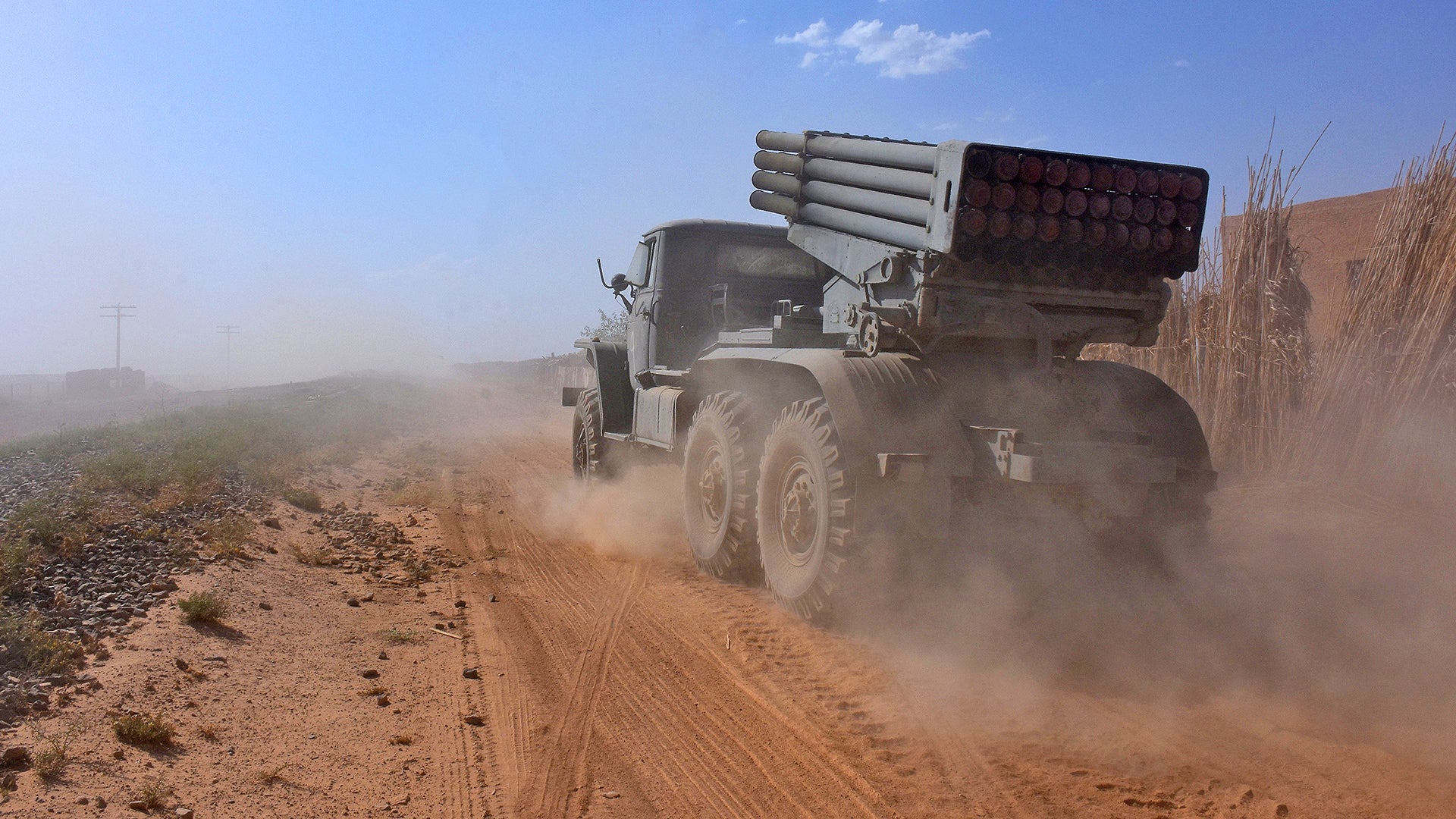Details remain murky, but multiple reports state that coalition airpower has struck pro-Assad militia forces once again near the coalition-backed rebel outpost at At Tanf, located roughly 20 miles northeast of the Jordanian border. At Tanf is a garrison where U.S. and coalition partners’ special operations forces are training, arming and supporting rebel forces, primarily known as the Free Syrian Army.
The skirmish comes just a couple of weeks after a very similar event occurred, in which coalition airpower ended up striking a column of Iranian-backed Shiite militia fighters and their vehicles that would not stop their advance on the base. This time around it seems that those at the garrison and coalition airpower above it were ready and waiting for another impending assault.
Here is the official statement about the incident from CENTCOM:
SOUTHWEST ASIA — The Coalition destroyed additional pro-Syrian regime forces that advanced inside the well-established de-confliction zone in southern Syria, June 6.
Despite previous warnings, pro-regime forces entered the agreed-upon de-confliction zone with a tank, artillery, anti-aircraft weapons, armed technical vehicles and more than 60 soldiers posing a threat to Coalition and partner forces based at the At Tanf Garrison.
The Coalition issued several warnings via the de-confliction line prior to destroying two artillery pieces, an anti-aircraft weapon, and damaging a tank.
On May 18, the Coalition conducted a strike against pro-Syrian regime forces that had advanced a significant distance into the de-confliction zone threatening the Coalition forces at At Tanf.
Coalition forces have been operating in the At Tanf area for many months, training and advising vetted Syrian partner forces engaged in the fight against ISIS.
The Coalition does not seek to fight Syrian regime or pro-regime forces but remains ready to defend themselves if pro-regime forces refuse to vacate the de-confliction zone. The Coalition calls on all parties in southern Syria to focus their efforts on the defeat of ISIS, which is our common enemy and the greatest threat to regional and worldwide peace and security.
At Tanf has been a hot spot in the ever more convoluted Syrian conflict for a year now. Last June, Russian jets bombed the base multiple times during a single sortie even after US forces were demanding the strike stop over the hotline set up between Russian and U.S. military command centers in the region.
The base near At Tanf has had its defenses reinforced in recent days, as another attempted assault from Shiite militia forces was expected. An increasingly large group of fighters had been slowly massing north of the base, just outside the deconfliction zone assigned to the US. The base could very well be seen by Iran as a major obstruction to achieving its goal of having a secured land-route that links Tehran with Damascus. In addition to heavier ground defenses, coalition air assets have maintained a constant patrol over the outpost in recent days—an impressive and expensive operation to say the least. Leaflets were also dropped on the militia’s rallying point telling them to vacate the area, and the U.S. tried to get Russia to warn them off as well, although they simply told the Russians they were in the area to fight ISIS.
The big question is what would have happened if the column of Iranian-backed troops and armor actually made its way to the forward operating base successfully? Is it Iran’s, or even the Assad regime’s aim to draw the U.S. into a direct conflict? Assad’s command and control capabilities have been described as fragmented, so it is possible the first attack was executed without the approval from the regime nor its Russian partners, but for that to happen a second time is highly unlikely.
After the May 18th attack we wrote the following:
“Iranian-backed Shiite militias, in particular Hezbollah, have fought alongside Assad’s army and Russian special operations teams to keep the Assad regime intact. Israel in particular has kept a close eye on Hezbollah’s activities in Syria, and has consistently struck arms transfers that occur in the country from Iran to the militant group.
It is not clear exactly who the militia unit involved in the incident was directly affiliated with, but it is possible Iran will respond to the strike in some fashion. So far there is no official statement out of Tehran.”
Today’s attempted assault could very well have been that response.
Contact the author: Tyler@thedrive.com
